Wynn Netherland - Sass and Compass in Action
Here you can read online Wynn Netherland - Sass and Compass in Action full text of the book (entire story) in english for free. Download pdf and epub, get meaning, cover and reviews about this ebook. year: 2013, publisher: Manning Publications, genre: Computer. Description of the work, (preface) as well as reviews are available. Best literature library LitArk.com created for fans of good reading and offers a wide selection of genres:
Romance novel
Science fiction
Adventure
Detective
Science
History
Home and family
Prose
Art
Politics
Computer
Non-fiction
Religion
Business
Children
Humor
Choose a favorite category and find really read worthwhile books. Enjoy immersion in the world of imagination, feel the emotions of the characters or learn something new for yourself, make an fascinating discovery.
- Book:Sass and Compass in Action
- Author:
- Publisher:Manning Publications
- Genre:
- Year:2013
- Rating:5 / 5
- Favourites:Add to favourites
- Your mark:
Sass and Compass in Action: summary, description and annotation
We offer to read an annotation, description, summary or preface (depends on what the author of the book "Sass and Compass in Action" wrote himself). If you haven't found the necessary information about the book — write in the comments, we will try to find it.
Summary
Sass and Compass in Action is the definitive guide to stylesheet authoring using these two revolutionary tools. Written for both designers and developers, this book demonstrates the power of both Sass and Compass through a series of examples that address common pain points associated with traditional stylesheet authoring. The book begins with simple topics such as CSS resets and moves on to more involved topics such as grid frameworks and CSS3 vendor implementation differences.
About this Book
For 15 years, weve been using CSS to patiently paint the web by hand. No more! Sass and Compass add scripting and a library of components to standard CSS so you can simplify stylesheet authoring, automate tedious tasks, and add dynamic styling features to your pages. Think of Sass and Compass as power tools that allow you to paint with remarkable speed and precision.
Sass and Compass in Action is a hands-on guide to stylesheet authoring using these two revolutionary tools. This practical book shows you how to eliminate common CSS pain points and concentrate on making your pages pop. Youll begin with simple topics like CSS resets and then progress to more substantial challenges like building a personal stylesheet framework to bundle and reuse your own approaches and opinions.
Purchase of the print book includes a free eBook in PDF, Kindle, and ePub formats from Manning Publications.
Whats Inside
- CSS for desktop and mobile web apps
- Loaded with examples and reusable techniques
- Authors are Sass and Compass creators and core team members
About the Authors
Wynn Netherland is a full stack web developer who co hosts The Changelog Podcast. Chris Eppstein is the creator of Compass and a member of the Sass core team. Brandon Mathis is a passionate professional web designer with deep Sass skills. Nathan Weizenbaum is the creator and lead developer of Sass.
Table of Contents
- PART 1: GETTING ACQUAINTED WITH SASS AND COMPASS
- Sass and Compass make stylesheets fun again
- Basic Sass syntax PART 2: USING SASS AND COMPASS IN PRACTICE
- CSS grids without the math
- Eliminate the mundane using Compass
- CSS3 with Compass
- Spriting
- From prototype to production
- High-performance stylesheets
- Scripting with Sass
- Creating and sharing a Compass extension
PART 3: TUNING FOR PRODUCTION
PART 4: ADVANCED SASS AND COMPASS
Wynn Netherland: author's other books
Who wrote Sass and Compass in Action? Find out the surname, the name of the author of the book and a list of all author's works by series.

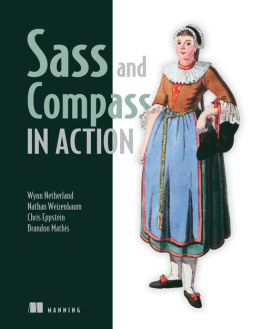

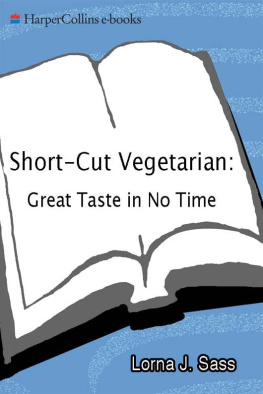
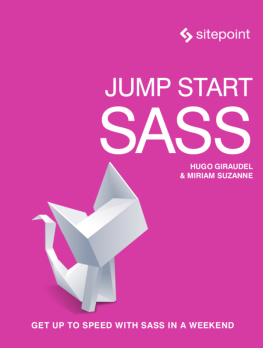
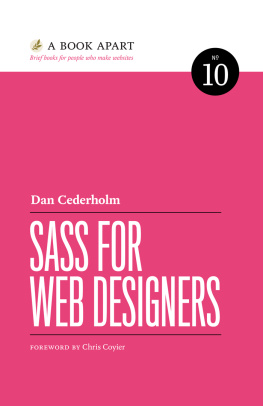
![Anirudh Prabhu [Anirudh Prabhu] - Beginning CSS Preprocessors: With SASS, Compass.js and Less.js](/uploads/posts/book/119148/thumbs/anirudh-prabhu-anirudh-prabhu-beginning-css.jpg)
![Ben Frain [Ben Frain] - Enduring CSS](/uploads/posts/book/119144/thumbs/ben-frain-ben-frain-enduring-css.jpg)


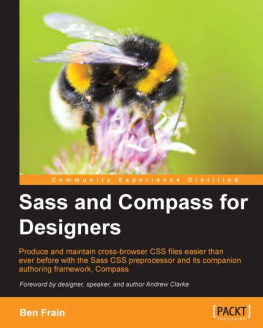
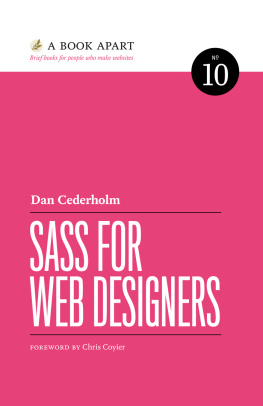
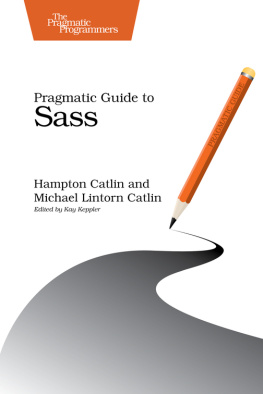

 Recognizing the importance of preserving what has been written, it is Mannings policy to have the books we publish printed on acid-free paper, and we exert our best efforts to that end. Recognizing also our responsibility to conserve the resources of our planet, Manning books are printed on paper that is at least 15 percent recycled and processed without the use of elemental chlorine.
Recognizing the importance of preserving what has been written, it is Mannings policy to have the books we publish printed on acid-free paper, and we exert our best efforts to that end. Recognizing also our responsibility to conserve the resources of our planet, Manning books are printed on paper that is at least 15 percent recycled and processed without the use of elemental chlorine.